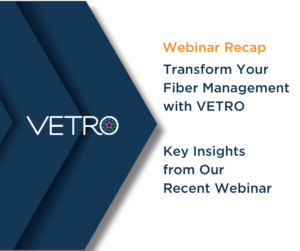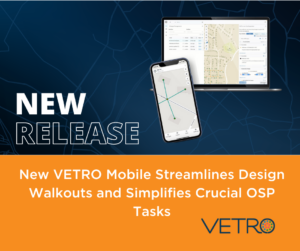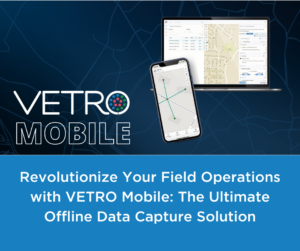The broadband industry is constantly evolving, and network operators have to make critical operations decisions. What is our network architecture going to look like? What’s the best way to reach the greatest number of customers in the shortest amount of time? What kind of software model are we going to use for scaling and maintaining our network?
Striking that balance between working hard and working smart isn’t always easy, but choosing a software delivery model that suits your organization is an excellent place to start. While on-premise and hosted solutions are popular mainstays of the industry, software as a service (SaaS) is the best option for organizations more concerned with growing their footprint than the day-to-day minutiae of software development and troubleshooting.
In this post, we talked with Lance McGee, VETRO’s head of product, to get a good understanding of the benefits of a true SaaS fiber management platform.
COST
The first thing on any operator’s mind (and rightly so) is going to be cost. Designing, building, and operating a network is no small task, and finding the most sensible way to allocate funding is one of the cornerstones of good business. SaaS is a subscription-based model, allowing your organization the flexibility to operate around a fixed, predictable fee for your software. One of the major drawbacks of an on-premise solution is the significant cost of investing on the front end. Starting out can often be expensive, time-consuming, and labor-intensive, forcing your employees to spend more time installing and managing infrastructure, and less time developing the footprint of your organization.
VETRO head of product Lance McGee refers to “time to value” as a major advantage of SaaS.
“Your executives, your general managers – they’re looking at time to value,” says Lance. “How quickly are you deriving value within your organization from the platform. How quickly can the platform make an impact on the business and workflows? With VETRO and other SaaS models, you’re getting value from day one. No lengthy, costly implementation; just sign in and go.”
Lance’s point about time to value speaks to a general benefit of a SaaS model: total cost of ownership. With a traditional delivery model, you’re paying out of pocket to implement upgrades, patches, and updates, not only costing your organization dollars, but time. At the end of the day, your team is responsible for the implementation of newer versions of the platform. This differentiator sets SaaS apart from a traditional subscription model, something Lance was sure to make clear during our conversation.
“A lot of companies think that just because they’re paying a subscription, it’s SaaS,” he says. “But that often isn’t the case. In many cases, you may pay a certain amount per month, but things like upgrades and services aren’t covered in those costs. SaaS is not just a commercial model; it’s a delivery model. A true SaaS model entitles you to servicing and software upgrades, and is always up to date, secure, and running the latest version. At VETRO, our customers stay on the bleeding edge.”
FLEXIBILITY & SCALABILITY
While cost is perhaps the most important factor in any business decision, flexibility and scalability come in at a close second. The ability to meet the needs of your customers in an ever-changing, rapidly growing industry is a major advantage for any organization, especially in the broadband space. Upgrades and bug fixes take much longer in a traditional model as opposed to SaaS, with weeks or even months between patches. Lance cites continuous integration and continuous development (CI/CD) as a major advantage of SaaS.
“With SaaS, you’re getting continuous development and integration,” he says. “You’re getting new functions in days, not weeks or months. Bug fixes, too. We can address a bug in a day or less, if need be. In a traditional implementation, bug fixes can take much longer, and it’s often the customer’s responsibility to install it.”
With VETRO and other SaaS models, you’re getting bug fixes now, and your team doesn’t have the responsibility of identifying and installing them. It’s this flexibility that allows your business to scale up or down, depending on your current needs. As a growing organization in the broadband space, the need for a platform that can scale rapidly is crucial. Because you’ve chosen a SaaS model, the costs associated with upgrading equipment, hardware, and software don’t fall on your shoulders. Because SaaS providers are tasked with maintaining and upgrading their platform, your team doesn’t have to worry about investing time and money into doing so.
"With SaaS, you’re getting continuous development and integration. You’re getting new functions in days, not weeks or months. Bug fixes, too. We can address a bug in a day or less, if need be. In a traditional implementation, bug fixes can take much longer, and it’s often the customer’s responsibility to install it”
Lance McGee, Head of Product, VETRO Tweet
SECURITY
SaaS suffers from a long-standing perception that, because it’s cloud-hosted, it is less secure than an on-premise solution. When we asked Lance to share with us something people often get wrong about SaaS, he immediately turned to security.
“One of the hardest hills to get over with telecoms was security,” says Lance. “Because we’re basically storing their most valuable assets – lines, poles, all their equipment – a lot of what they consider to be really valuable information. In the last couple of years, we’ve started to get over that hump. They [telecoms/ISPs] have started to realize that SaaS companies often do security better than their internal groups.”
Because SaaS providers are responsible for every aspect of a network operator’s platform, they tend to invest heavily in encryption, multi-factor authentication, and other security measures to keep their customers safe. And, because SaaS providers often have more available resources than a small business or rural telecom, they are often better equipped to identify and address security concerns.
PEACE OF MIND
Cost-effectiveness, flexibility, scalability, and security all boil down to one thing: peace of mind. As a network operator, your day is busy from start to finish, addressing design and management issues, operational concerns, and consumer demand and satisfaction. In the broadband industry, things are changing more quickly than ever. You shouldn’t be bogged down by the platform you choose to design and manage your network.
A SaaS model gives you the peace of mind to grow your footprint, strengthen your team, and solidify your position as a local broadband provider. With low implementation costs, regular upgrades, a robust security system, and the ability to scale as quickly or methodically as your organization needs, SaaS is quickly becoming the industry standard in software delivery.
Interested in learning more about VETRO FiberMap, the leading SaaS based GIS platform? Contact us here.





